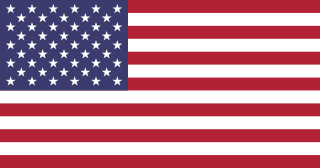
The Winter Olympic Games, also known as the Winter Olympics, is a major international multi-sport event held once every four years for sports practiced on snow and ice. The first Winter Olympic Games, the 1924 Winter Olympics, were held in Chamonix, France. The modern Olympic Games were inspired by the ancient Olympic Games, which were held in Olympia, Greece, from 776 BCE to 394 CE. The Baron Pierre de Coubertin of France founded the International Olympic Committee (IOC) 1,500 years later in 1894, leading to the first modern Summer Olympic Games in Athens, Greece in 1896. The IOC is the governing body of the Olympic Movement, with the Olympic Charter defining its structure and authority. The original five Winter Olympic Sports were bobsleigh, curling, ice hockey, Nordic skiing, and skating. The Games were held every four years from 1924 to 1936, interrupted in 1940 and 1944 by World War II, and resumed in 1948. Until 1992, the Summer Olympic Games and the Winter Olympic Games were held in the same year. A decision to change this was made in 1986, when during the 91st International Olympic Committee session, IOC members decided to alternate the Summer Olympic Games and the Winter Olympic Games on separate four-year cycles in even-numbered years. Also, at that same congress it was decided that 1992 Winter Olympics would be the last to be held in the same year as the Summer Games and that to change the rotation, the games that would be held in 1996 would be brought forward by two years, being scheduled to 1994. After those games, the next were to be held in 1998 when the four-year Olympic Cycle resumed.

Short-track speed skating is a form of competitive ice speed skating. In competitions, multiple skaters skate on an oval ice track with a length of 111.111 metres (364.54 ft). The rink itself is 60 metres (196.85 ft) long by 30 metres (98.43 ft) wide, which is the same size as an Olympic-sized figure skating rink and an international-sized ice hockey rink. Related sports include long-track speed skating and inline speed skating.

The 1952 Winter Olympics, officially known as the VI Olympic Winter Games and commonly known as Oslo 1952, were a winter multi-sport event held from 14 to 25 February 1952 in Oslo, the capital of Norway.

The 1932 Winter Olympics, officially known as the III Olympic Winter Games and commonly known as Lake Placid 1932, were a winter multi-sport event in the United States, held in Lake Placid, New York, United States. The games opened on February 4 and closed on February 13. It was the first time the Winter Games were held outside of Europe and the first of four Winter Olympics held in the United States; Lake Placid hosted again in 1980.
At the 1932 Winter Olympics, four speed skating events were contested. For the only time in the Olympic history, the speed skating were held as pack-style events, having all competitors skate at the same time. Women were allowed to compete in speed skating for the first time in history in a set of demonstration events. The IOC was reluctant to upgrade women’s events to full medal events, although the organizing committee of the Games advocated for the full inclusion of women’s events. The distances for women were 500 m, 1000 m and 1500 m. The pack-style racing would pave the way for short track speed skating, that would debut as a demonstration event at the 1988 Winter Olympics in Calgary before becoming an official Olympic event at the 1992 Winter Olympics in Albertville.

Figure skating at the 1932 Winter Olympics took place at the Olympic Center Arena in Lake Placid, New York. Three figure skating events were contested: men's singles, ladies' singles, and pair skating. The competitions were held from Monday, 8 February to Friday, 12 February 1932. It was the first time the events were held indoors.

Gillis Emanuel Grafström was a Swedish figure skater. He was born in Stockholm, Sweden. He won three successive Olympic gold medals in Men's Figure Skating as well as an Olympic silver medal in the same event in 1932, and three World Championships. Grafström is one of the few athletes who have competed in both the Summer and Winter Olympic games. He and Eddie Eagan are the only athletes to have won gold medals at both the Summer and Winter Olympic Games, although Eagan remains the only one to have managed the feat in different disciplines. He is one of the oldest figure skating Olympic champions.

Long track speed skating has been featured as a sport in the Winter Olympics since the first winter games in 1924. Women's events were added to the Olympic program for the first time in 1960 Squaw Valley Olympics.
Figure skating is a sport with participants across the world. Originally based in North America and Europe, the sport has experienced a major expansion in the countries of East Asia. The international governing body of the sport is the International Skating Union (ISU). Only those nations which are members of the International Skating Union are allowed to compete in the figure skating events in the Olympic Games.
The 10,000 metres speed skating event was part of the speed skating at the 1932 Winter Olympics programme. The competition was held on Friday, February 5, 1932, on Saturday, February 6, 1932, and on Monday, February 8, 1932. Eighteen speed skaters from six nations competed. Like all other speed skating events at this Olympics the competition was held for the only time in pack-style format, having all competitors skate at the same time.
The men's individual skating event was held as part of the figure skating at the 1928 Winter Olympics. It was the fourth appearance of the event, which had previously been held at the Summer Olympics in 1908 and 1920 and was also part of the first Winter Games in 1924. The competition was held from Tuesday, 14 February to Friday, 17 February 1928. Seventeen figure skaters from ten nations competed.
The ladies' individual skating event was held as part of the figure skating at the 1932 Winter Olympics. It was the fifth appearance of the event, which had previously been held twice at the Summer Olympics in 1908 and 1920 as well as at the Winter Games in 1924 and 1928. The competition was held on Tuesday 9 February and on Wednesday 10 February 1932. Fifteen figure skaters from seven nations competed.
The pair skating event was held as part of the figure skating at the 1932 Winter Olympics. It was the fifth appearance of the event, which had previously been held twice at the Summer Olympics in 1908 and 1920 and twice at the Winter Games in 1924 and 1928. The competition was held on Friday 12 February 1932. Fourteen figure skaters from four nations competed.
The men's individual skating event was held as part of the figure skating at the 1936 Winter Olympics. It was the sixth appearance of the event, which had previously been held twice at the Summer Olympics in 1908 and 1920 and at all three Winter Games from 1924 onward. The competition was held from Sunday, 9 February to Friday, 14 February 1936. Twenty-five figure skaters from twelve nations competed.

The United States participated in the 2010 Winter Olympics in Vancouver, British Columbia, Canada. The U.S. team had a historic Winter Games, winning an unprecedented 37 medals. Team USA's medal haul, which included nine gold, marked the first time since the 1932 Lake Placid Games that the U.S. earned more medals than any other participant.

The figure skating team event was a combined competition of Olympic figure skating disciplines at the 2014 Winter Olympics, held at the Iceberg Skating Palace in Sochi, Russia.

The men's single figure skating competition of the 2018 Winter Olympics was held on 16 and 17 February 2018 at the Gangneung Ice Arena in Gangneung, South Korea. The short program was held on 16 February and the free skating was held on 17 February.
The team event was a figure skating competition of the 2018 Winter Olympics that was held from 9 to 12 February 2018 at the Gangneung Ice Arena in Gangneung, South Korea. It took place over three days between 9–12 February with the short programs and the short dance taking place on 9 and 11 February, and the free skates and the free dance taking place on 11 and 12 February.











